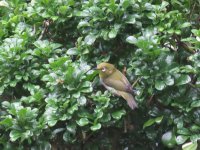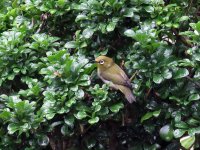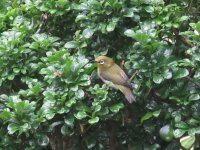I'm beginning to wonder if people in the US are getting a different camera than those in Asia and Europe. I used the frame assist lock button on the SX60 all day yesterday (while comparing cameras) and it always took at least 4 seconds to stabilize the image enough for the camera to auto-focus. This might be acceptable when photographing relatively immobile birds, but it's far too slow for sparrows, warblers, etc., and makes it impossible to get a useful shot if light conditions aren't ideal.
Maybe I expect too much, but that expectation comes from my experience with the SX50. Yes... with operator effort, good light and cooperative birds, the SX60 can keep up....but in my world, those conditions rarely exist. I can think of multiple records I've submitted that wouldn't have happened if I'd been reliant on the SX60....at least as I've experienced it.
After reading some of the input here tonight, I put the two cameras to another test. I shot in low light (indoors) with both cameras set to 2x telephoto, and stayed at a much more modest focal length. Took about 15 photos with each camera, then picked the best 3 of each, which I put here;
https://www.flickr.com/photos/127980272@N06/sets/72157648607273629/








